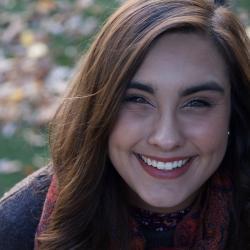
Social Anxiety Treatment in Philadelphia: Looking for patterns in your social anxiety When you are struggling with social anxiety, it can feel like every social situation is triggering. While for some this may be true, most people with social anxiety find certain social situations more anxiety provoking than others. More importantly, people with social anxiety can actually have very positive social interactions but struggle with recognizing what these are due to the experiences they have when anxious. Exploring which social situations are more triggering than others will reveal to you important patterns about your social anxiety. Over the next month, use the social anxiety scale below to track your social anxiety in various social situations. Then explore some of the possible patterns to uncover your specific patterns.
Social Anxiety Scale
For each social interaction you have, use the following scale as a baseline to track different aspects of your anxiety. Use a journal or even a smart phone. The important thing is for you to be able to quickly and easily record your experiences just after they happen. It will also help you remember all the events that happened over the last month or two when go back to analyze the experiences. Remember to record positive social interactions! They are key to better understanding your social anxiety and key to you recognizing you do have positive social interactions despite your social anxiety.
Date:
Month, Day, Year
Time:
Note the time of day
Social Situation:
Describe the interaction and setting in one sentence or less
Physical Symptom:
Record any of the following physical symptoms you experienced from social anxiety…vomiting, headache, sweating, heart palpitations, feeling flushed, panic attacks, hyperventilating, shaking, dizziness, nausea, blushing, tightness in chest, voice changes, diarrhea. Also note whether these symptoms occurred when just thinking about an interaction, or as the interaction occurred.
Cognitive Symptoms & Feelings:
On a scale of 0 to 10, 0 being none at all, and 10 being the most you ever had in your life, rate the following…
- Feeling Worried:
- Feeling Judged:
- Feeling Embarrassed:
- Overall Anxiety:
- Overall Comfort:
Intensity of Overall Fear:
On a scale of 0 to 10, 0 being none at all, and 10 being the most you ever had in your life, rate the overall feelings of fear.
Intensity of Obsessive Thoughts:
On a scale of 0 to 10, 0 being none at all, and 10 being the most you ever had in your life, rate the intensity of your obsessive thoughts involved in your social anxiety.
Example of Social Anxiety Scale
Date: June 1st, 2012
Time: around 12PM
Social Situation: Was at deli ordering lunch and the cashier (male in 30s) joked about my order and seemed to be making fun of me.
Physical Symptom: While interaction was happening I felt tightness in chest, blushing & heart race increase.
Cognitive Symptoms & Feelings:
- Feeling Worried: 2
- Feeling Judged: 8
- Feeling Embarrassed: 8
- Overall Anxiety: 7
- Overall Comfort: 2
Intensity of Overall Fear: 6
Intensity of Obsessive Thoughts: 8
Date: June 1st 2012
Time: 2:30PM
Social Situation: Had to give a presentation at work in front of a group of 12 of my coworkers, including a few supervisors.
Physical Symptom: Before giving presentation I started sweating, my heart started racing, I felt shaky and nauseous. During the presentation I was able to calm down a bit but still felt shaky.
Cognitive Symptoms & Feelings:
- Feeling Worried: 4
- Feeling Judged: 6
- Feeling Embarrassed: 3
- Overall Anxiety: 6
- Overall Comfort: 3
Intensity of Overall Fear: 7
Intensity of Obsessive Thoughts: 6
Date: June 1st 2012
Time: 9:30PM
Social Situation: Met up with some female friends for drinks, felt like I didn’t have much to contribute to the conversation but generally enjoyed myself.
Physical Symptom: While interacting I felt some tightness in chest when I felt like I was not contributing to conversation.
Cognitive Symptoms & Feelings:
- Feeling Worried: 4
- Feeling Judged: 3
- Feeling Embarrassed: 2
- Overall Anxiety: 4
- Overall Comfort: 6
Intensity of Overall Fear: 3
Intensity of Obsessive Thoughts: 2
After recording your interactions even just for about 2 weeks you can begin to notice patterns. If you don’t notice any patterns after 2 weeks just keep recording. Likely you just need to have more experiences documented for the patterns to reveal themselves. And remember, don’t forget to record the positive experiences too! Generally though, after one month you should be able to notice some kind of pattern. Read about some of the patterns below to guide you.
Group Interactions Versus One-On-One Interactions:
One pattern people notice is that they are more anxious in group interactions compared to one-on-one interactions, or vice versa. Compare at least 3 group interactions to at least 3 one-on-one interactions. Which situation do you typically experience as more anxiety provoking? How can you tell (note differences in your ratings and physical symptoms)?
Strangers Versus People you Know:
Another pattern is that people experience more anxiety with strangers versus people they already know, or vice versa. Compare at least 3 interactions with strangers to 3 interactions with people you know. After reviewing these scenarios, are you more triggered by interactions with strangers or people you know? What evidence do you have to support your theory (look at your ratings and physical symptoms)?
Specific Types of People (based on 1st impressions):
Some people with social anxiety find certain characteristics of people more triggering than others. Consider your general gut reactions or 1st impressions of people. Review your log of social anxiety scales and see if there is a certain type of person that is associated with high levels of social anxiety. Look at factors like age, gender, race, disability status, style of dress—more appearance based characteristics.
Personality Types:
Other people find they not as triggered by appearances as they are by certain personality traits. Are you triggered more by cocky people, shy people, arrogant people, unfriendly people, angry people, overly relaxed people? Make sure to note the types of personalities that you seem least triggered by.
Environmental Factors:
Sometimes people notice that their social anxiety might be influenced by environmental factors like being outside at a BBQ versus being inside a busy grocery store. Revisit your descriptions of recorded social interactions to explore the environmental factors.
Your Role in the Social Interactions:
Do you have less social anxiety or more when you have an active role in the social event (for instance, consider hosting a party, versus just being a guest at a party)? Sometimes the roles you may have to play in certain social interactions can be more anxiety provoking than others. Some people experience more social anxiety when they have an active role in an event because they feel as though more eyes are on them. However other people can feel in more control when they are in an active role, and thus experience less anxiety.
Conclusion…Finding patterns in your social anxiety will help you realize that you do not have social anxiety in every social situation, and in fact there might be many different social situations where you feel quite comfortable. Knowing what situations or types of people seem to trigger your social anxiety more will enable you to appropriately plan for these situations. In addition you can develop specific and effective coping skills for the social situations you know you are more triggered by.
Social Anxiety Treatment in Center City Philadelphia. Call today to schedule an appointment.
You can self schedule an in-person or virtual therapy session at the Center for Growth by calling (215) 922- LOVE (5683) x 100.
Our Guarantee: If after your first session you are not sold that you are working with the right therapist, do not hesitate to call our intake line at 215 922 5683 x 100 or Alex at (267) 324-9564 and ask to be rescheduled with another therapist. The choice of how you want to proceed is yours. Our only goal is to support you in becoming the best you possible.
For your convenience, we have brick and mortar offices and work with clients virtually in Connecticut, Delaware, Florida, New Jersey, New Mexico, Pennsylvania, and Virginia.
Physical Therapy Office Locations:
Ocean City Therapy Office 360 West Ave, Floor 1, Ocean City, NJ 08226
Mechanicsville Therapy Office 9044 Mann Drive, Mechanicsville Virginia, 23116
Society Hill Therapy Office 233 S. 6th Street, C-33, Philadelphia PA 19106
Art Museum / Fairmount Therapy Office 2401 Pennsylvania Ave, Suite 1a2, Philadelphia PA 19130
Providence Therapy Office 173 Waterman St. Providence, RI 02906
Fayetteville Therapy Office 101 Devant Street #606, Fayetteville GA 30214
Santa Fe Therapy Office, 2204 B Brothers Road, Santa Fe, New Mexico, 87505
Telemedicine Therapy Locations: We have therapists who are licensed to work in Connecticut, Delaware, Florida, Georgia, New Jersey, New Mexico, Pennsylvania and Virginia and Pennsylvania
Therapy Services Offered in Fayetteville, Ocean City, Mechanicsville, Philadelphia, Providence, Santa Fe:
Individual Counseling and therapy
Couples Counseling and marriage counseling
Teen Therapy and Adolescent Therapy and tweens and child counseling
Family Therapy and multi-generational counseling
Art Therapy and Counseling no art skills needed
ADHD Therapy and ADD, Dyslexia, Autism, Tourettes counseling
Anxiety, Panic, OCD Therapy and worry and fear support
Breaking the cycle of Codependency and being your own person
Overcoming Chronic Illness and Chronic Pain .
Depression Therapy and sadness, gloom, and upset support
Functional Neurological Disorder (FND) Therapy is a particular style of therapy designed for people with problems affecting their nervous system, how the brain and body send and receive signals.
Grief Therapy and loss, End of A Relationship, rejections, pregnancy and loss and therapy
Mindfulness Based Therapy and spirituality based therapy
Narcissistic Abuse Recovery child of, parent of, spouse of, sibling of a narcissist.
Sex Therapy and sexual function & dysfunction, sex addiction, sexual orientation and gender identity support
Trauma Therapy both emotional and sexual abuse, complex trauma, PTSD counseling
Divorce support
Affairs, Infidelity, Unfaithful, Cheating counseling
Parenting therapy
Personality disorder treatments Narcissist, Borderline, Histrionic
Setting Boundaries and identifying ones own Core Beliefs
Just name some of the Mental Health issues that we work with. Our goal is to help you Change and Achieve Your Dreams





















